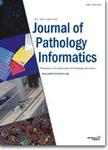版权所有:内蒙古大学图书馆 技术提供:维普资讯• 智图
内蒙古自治区呼和浩特市赛罕区大学西街235号 邮编: 010021

作者机构:Department of Biomedical Engineering Rutgers The State University of New Jersey Piscataway NJ USA Department of Biomedical Engineering Case Western Reserve University Cleveland OH USA. Department of Pathology and Laboratory Medicine University of Pennsylvania Philadelphia PA USA. Department of Pathology and Anatomical Sciences University at Buffalo Suny Buffalo NY USA. Department of Imaging and Computer Vision Siemens Corporate Research Princeton NJ USA.
出 版 物:《Journal of pathology informatics》 (病理信息杂志)
年 卷 期:2014年第5卷第1期
页 面:8页
学科分类:1001[医学-基础医学(可授医学、理学学位)] 100104[医学-病理学与病理生理学] 10[医学]
主 题:Computer aided diagnosis extensible imaging platform prostate histology
摘 要:CONTEXT:Co-registration of ex-vivo histologic images with pre-operative imaging (e.g., magnetic resonance imaging [MRI]) can be used to align and map disease extent, and to identify quantitative imaging signatures. However, ex-vivo histology images are frequently sectioned into quarters prior to imaging. AIMS:This work presents Histostitcher™, a software system designed to create a pseudo whole mount histology section (WMHS) from a stitching of four individual histology quadrant images. MATERIALS AND METHODS:Histostitcher™ uses user-identified fiducials on the boundary of two quadrants to stitch such quadrants. An original prototype of Histostitcher™ was designed using the Matlab programming languages. However, clinical use was limited due to slow performance, computer memory constraints and an inefficient workflow. The latest version was created using the extensible imaging platform (XIP™) architecture in the C++ programming language. A fast, graphics processor unit renderer was designed to intelligently cache the visible parts of the histology quadrants and the workflow was significantly improved to allow modifying existing fiducials, fast transformations of the quadrants and saving/loading sessions. RESULTS:The new stitching platform yielded significantly more efficient workflow and reconstruction than the previous prototype. It was tested on a traditional desktop computer, a Windows 8 Surface Pro table device and a 27 inch multi-touch display, with little performance difference between the different devices. CONCLUSIONS:Histostitcher™ is a fast, efficient framework for reconstructing pseudo WMHS from individually imaged quadrants. The highly modular XIP™ framework was used to develop an intuitive interface and future work will entail mapping the disease extent from the pseudo WMHS onto pre-operative MRI.